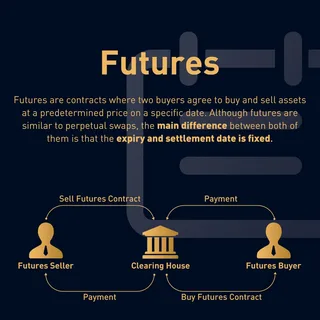How the Trading Hours Differ Across Futures Contracts (And Why Prop Traders Care):
The future’s market is not a uniform market. Whereas most think of the futures market as a 24-hour market, the fact is that every contract has its own trading schedule, liquidity profile, and volatility cycles. This difference is key for prop traders: strategies may work in one contract but completely fail in another just because of the different trading hours for futures contracts. With the instant funding futures prop firm model sprouting up, an unprecedented number of traders are now looking into various futures products, making it imperative to have the knowledge on when and how these contracts trade.
Reasons for Different Hours of Trading Futures
Unlink shares that naturally conform to a script-like calendar; futures on the other hand are globally tied to physical commodities, currencies, and interest rates. Each contract is being traded on a particular exchange with its specific trading hours.
Listed below are some examples:
- Equity Index Futures such as the E-mini S&P 500 trade are nearly 24 hours on CME Globex, pausing only a few hours daily.
- Agricultural futures such as corn, wheat, soybeans, mausoleum hours reflected physical trading of the crops.
- Energy Futures such as crude oil and gas are selling nearly all round through the day with global demand and geopolitical risk.
Currency Futures prefer international forex market activity, active across various time zones.
The inconsistency in schedules means that one cannot assume all futures behave similarly.
The Matter of Liquidity Windows
Throughout the course of a trading day, liquidity is not evenly distributed. Even the contracts which technically trade near 23 hours every day do see the bulk of volume concentrated in certain windows.
Examples would include:
- E-mini S&P 500 futures see the most liquidity in U.S. regular trading hours (9:30 a.m. to 4:00 p.m. EST).
- Crude oil futures see a great deal of liquidity during both the European and U.S. sessions, corresponding with global energy flows.
- Agricultural futures provide liquidity during the U.S. Morning Hours when the physical commodity markets are active.
Prop traders must align their strategies to these liquidity windows. Scalping a contract during thin hours may result in slippage, whereas trading during liquid hours will have tighter spreads and quicker fills.
Volatility Patterns Across Contracts
The volatility also shifts with futures trading hours. For instance, equity index futures tend to pick up volatility around the U.S. open and close, while crude thrusts itself in the midweek upon the release of inventory reports. Agricultural futures potentially leap on the publication of crop reports.
Having such volatility patterns ingrained in their minds allows prop traders to be more present during the times when opportunities are the highest. Because ignoring them could either lead to missed setups or unjust losses.
Risk Management Methodology on Different Contracts
Contracts with different schedules require somewhat different risk controls. For example, a trader used to deep liquidity in equity futures might underestimate the immense risk potential when trading lean hogs futures, which are thinly traded with a wide spread.
Prop traders usually derive separate risk models for every contract, incorporating the level of expected volatility, the normal trading volume and sessions of peak activity.
How Instant Funding Futures Prop Firms Make a Difference
Diverse futures contracts have been accessible only for traders with significant personal capital. However, since instant funding futures prop firm model provides immediate access to an account with funds, this has changed.
Key advantages offered are:
- Experimentation Across Contracts – Traders can practice their strategies in equity, energy, or agricultural futures without having to wait for long evaluation periods.
- Zone Flexibility – A trader in Asia could turn focus on Nikkei or currency futures, while one in Europe may concentrate on crude oil or Eurodollars.
- Minimizing Own Risk from the Trader’s Point of View – Capital is from the firm, thus allowing him to study different futures trading hours without risking his finances.
- Fast-Tracking Development – Traders can learn quickly which contracts suit their style and allocate capital into them.
Practical Tips for Prop Traders
Map Liquidity: Know when your nominated contract is most active and concentrate trades within that window.
Adjust Position Size: Trade small in thin contracts or those traded away from peak hours.
Have a Watchful Eye on Economic Calendars: Key reports such as crude oil inventories or crop data strangely coincide with specific futures trading hours.
Contract Diversification: Caution against relying solely on one product; spreading contracts reduces risk while maximizing opportunity.
Why Prop Traders Care About Contract Hours
In a prop trading environment, consistency and risk control come into play. Misunderstanding contract hours can lead to overtrading in illiquid conditions, hitting firm-imposed limits, or failing evaluations. Thus, those with good command in contract-specific timing are bound to outperform their peers.
In conclusion
Futures contracts, on the surface, look very similar to each other in that they really vary in their schedules, liquidity, and volatility patterns. A strategy that works for equity index futures may fail for agricultural or energy futures unless reshaped for the right trading window.
Mastering contract trading hours enables prop traders to marry up strategies to liquidity and volatility, thus maximizing efficiency. The instant funding futures prop firm then fast tracks this process, giving traders around the world the ability to explore multiple contracts without delay. In today´s highly competitive market, timing is not just essential; it is all.


